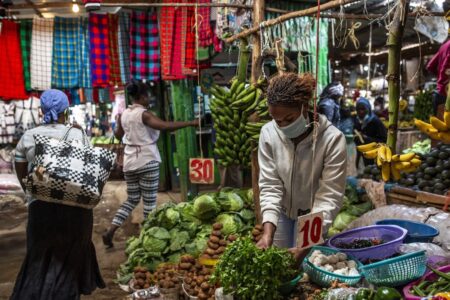- Consumer spending in countries like Kenya is projected to increase as inflation slows gradually, but overall spending will be cautious and value-driven.
- Entry-level consumers, who spend between $2 and $4 daily, are expected to drive demand, while preferences in the upper segment will evolve to include more refined tastes focused on luxury and convenience.
- The report states that consumers will be more price-conscious, deviating from general global norms, particularly in Africa..
The aftermath of the COVID-19 pandemic, astronomically high commodity prices, global monetary tightening, and food protectionism shaped the consumer landscape in 2023. These realities resulted in a consumer landscape characterized by unhappy consumers with closed wallets, as per the Stears 2024 outlook report.
“World inflation was projected to average 6.9 per cent in 2023, the highest level since 1996, impacting consumer trends globally. However, bright spots exist in the consumer landscape this year,” it says.
Global inflation is expected to slow to 5.8 per cent in 2024 from the previous 6.9 per cent in 2023, indicating a potential reopening of consumer wallets.
According to last year’s survey by the firm, 39 per cent of global respondents stated they would spend less money, while 25 per cent indicated they would spend more.
As a result, the IPSOS global consumer confidence index remained below 46 throughout 2023 for the first time since 2015.
This year, the firm predicts that consumer spending will pick up, driven by emerging markets in Asia and Latin America, where optimism about consumer spending is high.
Read also: Spending beats estimates by 0.3 per cent in September, as expected
Increase in social spending
“Housing, food, transport, restaurants, and culture are projected to account for over 50 percent of global consumer spending in 2024. This largely reflects a preference for essential goods as consumers recover from the inflation surge experienced in 2022−2023, which eroded savings,” stated the report in part.
Additionally, there is an expected increase in social spending, particularly among older generations (baby boomers), signaling that brand strategies should not solely focus on the younger generation.
“Furthermore, there is a projection of rising demand for AI, such as voice assistants, to facilitate global consumption decisions.”
Consumer spending continental outlook
Specifically in Africa, the report says consumers will be more price-conscious and distinct from the general global norms.
Sub Sahara’s GDP per capita underscores a consumer market deeply rooted in price consciousness, reflecting a heightened focus on affordability, it notes. The purchasing patterns thus favour essential goods and value-for-money products.

The upper segment refers to the people with annual salaries ranging from $10,000 to $1 million whose spending is unlocked through access to credit, savings, and disposable income.
One of the determining factors, inflation, in the region is projected at 13 per cent this year, down from 15.8 per cent in 2023 but still high compared to the global average of (5.8 per cent in 2024).
Countries like Kenya are likely to see a gradual increase in consumer spending as inflation slows, but overall, spending will be cautious and value-driven.
Read also: Consumer Behavior and Economic Classes
Consumption of luxury goods
Despite broader economic pressures, the upper-income consumer is expected to maintain brand loyalty and continue their consumption of luxury goods, offering opportunities for high-end brands.
A rise in individual loans will likely enable consumer spending as promotional offers and sales are expected to attract more consumers, especially those who are price-sensitive.
A recent global consumer trends index report by the global firm Marigold highlights some challenges that today’s marketers face on multiple fronts.
These challenges include building customer trust, delivering value, and navigating economic uncertainty while balancing data privacy and personalization, especially as third-party cookies crumble.
The report provides insights into consumer preferences that drive marketing decisions and explores the influence of brand relationships.
It notes that consumers value relationship marketing strategies, personalization, and loyalty programs. On the other hand, third-party tracking tools and social media advertisements continue to rank among the most unpopular.
Wendy Werve, CMO of Marigold, emphasized, “Consumers reward brands they love with a larger share of their wallet and repeat business. Brands earn that love by delivering personalized interactions in the moments that matter and demonstrating that they know their customers.”
Read also: Kenyan consumers optimistic, but financial worries weigh heavy











